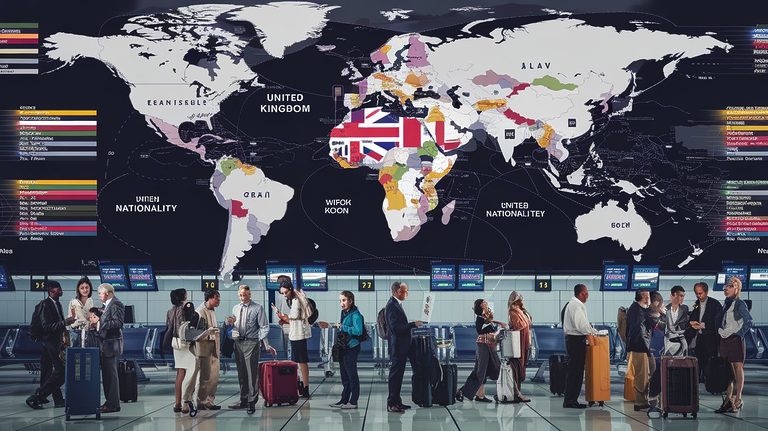The landscape of global travel is evolving, marked by the increasing implementation of tourism taxes. As more destinations around the world adopt these levies, it becomes crucial for travelers to understand their implications. These taxes, often aimed at funding sustainable development and infrastructure improvements, are reshaping how we experience and support the places we visit. With the rise of the tourism tax trend, gaining essential insights into their structure and purpose can enhance the travel experience while promoting responsible tourism.
The phenomenon of tourism taxes is gaining momentum on a global scale, as more destinations recognize its potential to fund sustainable infrastructure and manage the challenges of increasing visitor numbers. In this article, we will explore how these taxes function, their implications for travelers, and the various forms being implemented around the world.
Understanding Tourism Taxes
The term tourist tax, also known as taxe de séjour, refers to a financial charge levied on visitors staying in local accommodations such as hotels, vacation rentals, or campsites. Typically, this tax is applied per person, per night and varies based on both the type of accommodation and the local regulations. The core objective is to enhance local tourism infrastructure, including site maintenance, public transport improvements, and destination promotion.
The Introduction of New Taxes in 2025
Starting from January 1, 2025, various regions are set to introduce or increase existing tourist taxes. For instance, Russia will implement a new tax at a rate of 1% on accommodation costs with a minimum charge of 100 rubles per day, escalating to 3% by 2027. In Greece, the climate resilience tax for 1-2 star hotels will see an increase from 1.5 euros to 2 euros per night. Meanwhile, Lisbon’s tourist tax has doubled to 4 euros per night since September 2024, with cruise passengers required to pay 2 euros per visit.
Global Trends in Tourism Taxation
Several countries worldwide have already employed tourism taxes, reflecting a broader trend. In Europe, nations such as France charge between €0.20 and €4.20 per person per night, while Spain’s Balearic Islands levy between 1 and 4 euros per night. Notably, Italy’s tourist tax can reach up to 10 euros per night in certain cities, and Germany imposes a 5% hotel tax in Berlin.
Beyond Europe, destinations like Thailand and Japan have implemented similar charges, with Thailand requiring a 300 THB (approximately 9 USD) entry fee and Japan’s “Sayonara tax” set to commence at ¥1,000 (around 7 USD).
Hawaii’s Green Fee Initiative
In response to ongoing environmental challenges, Hawaii is planning to introduce a climate impact tax starting in 2025, which will be set at $25 per visitor. The tax aims to contribute to efforts such as beach maintenance and environmental preservation initiatives to combat the adverse effects of overtourism.
Objectives Behind Tourism Tax Implementation
The primary goals of implementing tourist taxes include combating overtourism, financing sustainable development projects, preserving local culture, and improving tourism infrastructures. Although these fees increase the overall cost of travel, they promote responsible tourism and contribute to the sustainability of tourist destinations.
The Future of Tourism Taxes
As the demand for travel continues to grow, it is anticipated that the number of regions employing tourist taxes will rise. For more information on emerging tourism tax regulations, consider exploring the potential changes in the Canary Islands here and the plans for Venice to raise its tourist tax by 2025 here.
- Global Trend: Increased implementation of tourism taxes across various destinations.
- Local Funding: Revenues used to improve local tourism infrastructure.
- Tax Categories: Varied between accommodation, entry, and environmental fees.
- Sustainable Tourism: Aimed at promoting responsible travel habits among tourists.
- Cultural Preservation: Taxes contribute to the protection of local heritage.
- Visitor Awareness: Educates tourists on the impacts of their travel choices.
- Economic Impact: Can influence overall travel costs but supports local economies.
- Overtourism Management: Designed to alleviate pressure on popular destinations.
The rise of tourism taxes has become a notable global trend, with over 60 destinations implementing such levies to address the impact of increased travel. These taxes, typically referred to as taxe de séjour, are charged per night and per person and vary based on accommodation type and location. The primary aim is to finance local tourism infrastructure and improve services.
Key adjustments are set to take effect in 2025 in various countries. For instance, Russia will introduce a 1% tax on accommodation costs, increasing to 3% by 2027, while Greece and Lisbon are seeing increases in their respective tax rates. Worldwide, regions like Hawaii plan a new “climate impact tax” to conserve local environments.
These taxes aim to tackle overtourism, fund sustainable projects, and enhance the preservation of local cultures. Despite increasing travel expenses, they foster responsible tourism and contribute to the sustainability of the destinations visited.

Hello! I’m Elisa, a 45-year-old travel companion with a passion for exploring new places and cultures. With years of travel experience under my belt, I thrive on creating memorable journeys for my clients. Let’s embark on an adventure together!





